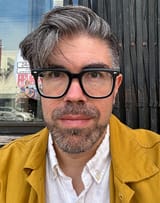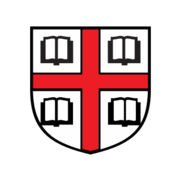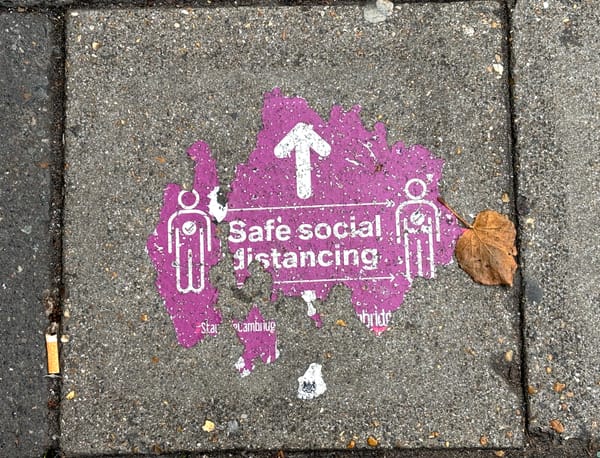Unsorted Depths
Unsorted Depths visualizes the archive as a cultural formation but also charts the field of memory against the backdrop of noise.
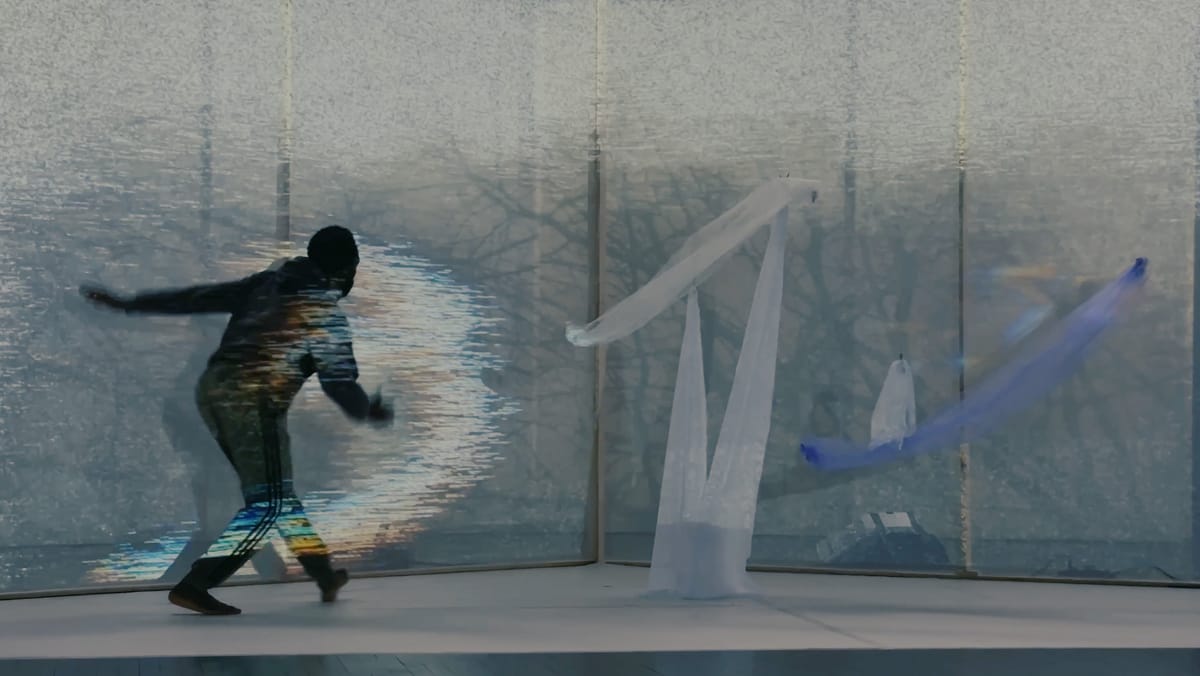
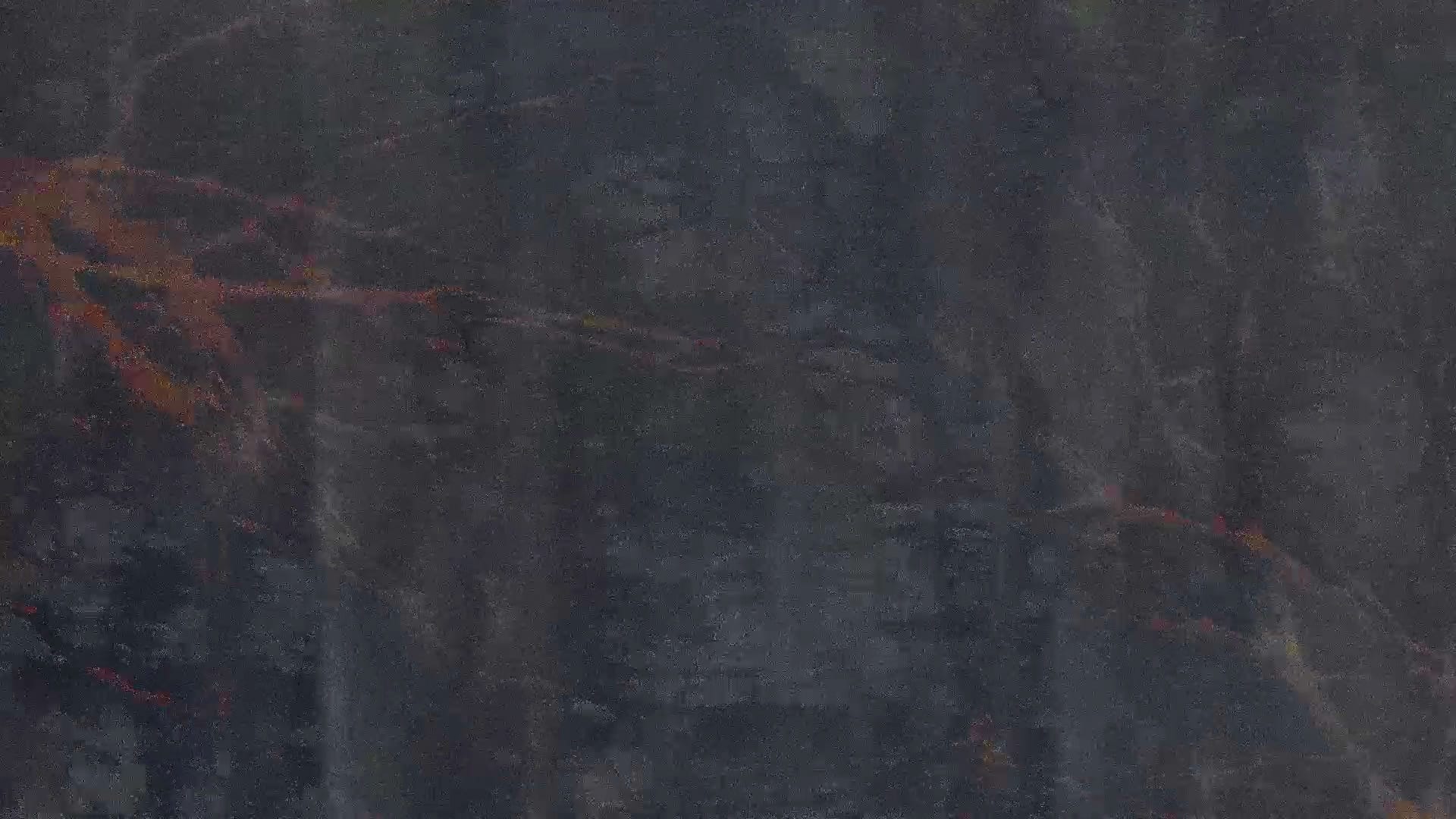
This week, I have been at Jacob’s Pillow as a PillowLab resident with the Choreodaemonics Collective, a collaborative ensemble of artist-technologists founded by Laurel Lawson and Sydney Skybetter, developing a way to activate its vast archives through robotics and visualization while centering the presence of the body: how knowledge enters into bodies, is transmitted between bodies, and transforms through embodiment and re-embodiment.
The title Unsorted Depths draws from Aleida Assman’s concept of the archive as an ordered space that structures the retrieval of loosely associated memories. Unsorted Depths visualizes the archive — the idea of the archive as a cultural formation, but also the specific archive of Jacob’s Pillow, but also the field of memory and forgetting — as noise: “the archival embodiment shifts endlessly from contact to dissolution and reformation,” as we write in the performance notes, aimed at creating an embodied experience of these tensions for the audience.
We started with a few basic ideas:
- The purpose of an archive is to activate memory, but the memory produced by an archive reflects a distillation of memory.
- The archive is therefore a site that activates a selection of memory at the exclusion of other memories.
- Ellisions and gaps that exist beyond the frame of these selected memories exert their own kind of presence, a negative space of what is forgotten that structures what is remembered. Or: you see what you see because of what was cut out.
Information, like the physical world, experiences entropy: an erosion of form and structure over time. Things eventually dissolve into noise unless we resist entropy. Preserving information in an archive or a dataset slows down the process but can’t stop it. To stop entropy would be to stop the universe's movement, the disentangling of the tangled atoms, or stories, that make it.
The piece is awash in a visual language of noise and blur, cycles and improvisation. Noise, obviously, fascinates me as a state of vast combinatorial potential—atoms, electrons, and neurons waiting to be arranged. It is also the state to which all those atoms, electrons, and neurons return, entering the cosmic bank of resources toward the new.
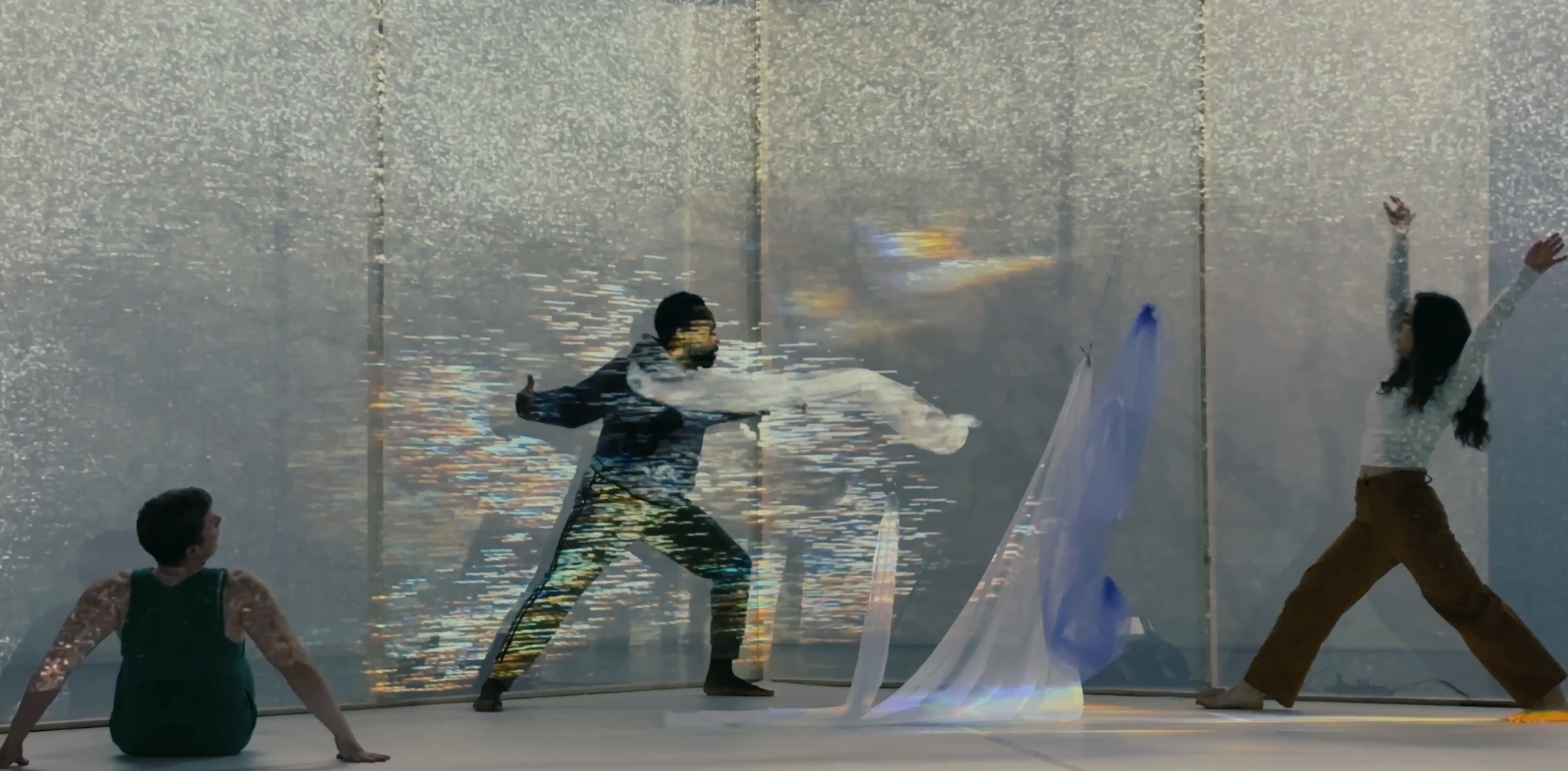
Against a backdrop of cosmic noise, data loss, and the lost arrangements of atomic structures we call the “past,” a presence emerges, moving between the backdrop of forgetting and lost-ness into the archival record. And from the archival record (visualized here as a second screen) we enter into a multitude of new relationships with what the archive has been distilled. I call this The Presence, a shimmering visualization of memory, which floats against the screen, eliminating noise in its trail, offering a shadow through which we can gaze at what's left of the past.
Careful to balance the tension between dissolving, freezing, and regeneration, the presence can be shaped into any direction. The first is through the technological achievement of the show, a floating assemblage of fabrics into the loose form of a body that copies a range of poses held within the archive of these dancers which date back to the founding of the site by Ted Shawn in the 1920s.
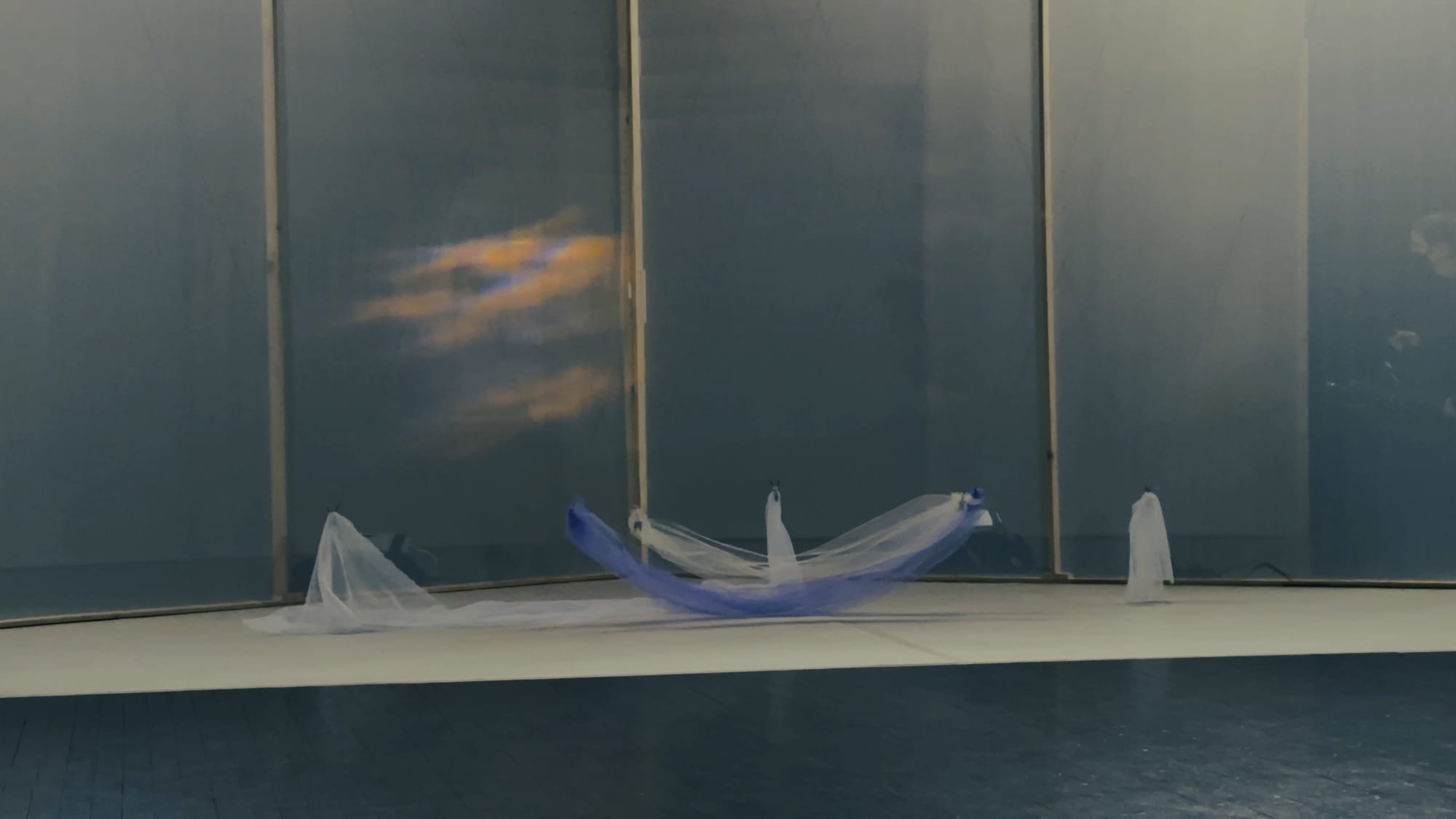
The robot – actually a coordinated series of six pulleys, built for this installation & performance by Tighe Costa – lift and spin fabric to match the poses from the archive, and later, the positions of the live dancers. In three acts, we see:
- The robot initially perform these motions as a robot would: interpolating positions in inhuman ways and sorting the past into a series of poses.
- Then the human form intervenes: our dancers becomes a conduit, first shifting the presence of memory from oblivion — a performance of the gesture of preservation at the heart of archival practices.
- Then, the human body moves forward, interacting with the robotic presence, embodying and evolving this archive into new forms and embodied performance.
In the end, with a lovely re-interpretation of The Presence shaped with projection designed in collaboration with Carlos Johns-Davila.
Through connections between the robot and other dancers, the spectral presence — the memory of the archive — moves between them, devouring noise with each step, replicating this tension between the recombinatorial potentiality of noise and the locking-in-place of our specific arrangements.
I am a stranger to dance, but I am excited by the work as a way of thinking about the issue of embodiment, the contrast between embodiment of performance — which includes a tradition of observation and response, a requirement to learn the performance from someone who has learned the performance, and so on and so on. But embodiment also establishes a kind of loss, and this loss allows the establishment of new arrangements. As Cécile Malaspina notes, each decision we make narrows the possibility of events away from noise and more toward constraint; this is simultaneously an opening and closing of possibility.
The presence is a blurred abstraction of a sampling of history, taken from a prior retreat to the Jacob's Pillow archive with Andre Zachery and Colin Clark searching through relevant archival video. In the end we arrived at a selection of slices of performances across time and space at the archive, mapped not by their connections but by possible arrangements between those two bodies. This choreography of images placed one body into a sequence with the next closest pose. This reference was made by human eyes scouring more than 60,000 still frames rendered from the video archive.
To create "The Presence,” I thought about this relationship between potential and constraint through interpolation. This very basic machine learning process analyzes a hand-selected assortment of frames. It shifts pixels between them, tracking the body not as a body but as color information embedded into pixels and transformed, step by step, to meet the constellation of pixels in the next image.
The interpolation is necessarily blurry, as it is a permanent state of generative possibility: a vast number of possible poses at once, but constrained, as it was, by the connections, or lack of connections, by the two dancers placed beside each other in the sequence.

There is a tension between this noise — the entropy of past states of the universe, and the information loss inherent to the passage of time — and the preservation of these states in human memory (and the technologies of memory we invent). Another tension exists between the constraining grip of memory and the freedom of letting go. Let go of too much, and you dissolve into noise; hold on to too much, and you block the noise from entering into you, limiting the motion of new possibilities and inner sense-making. It is this space that Unsorted Depths presents as a stage from which dancers are able to improvise their way, through movement, to resolve these tensions with their own emphasis, the direction they want to head in the given moment.
There is also an activation of place in the work, drawing on footage of surrounding trees and archival footage of the barn planks that make the buildings; the noise seeps and dissolves through these structures — through the trees and footage, the bodies in the archive and the bodies in the present — evoking their memory, acknowledging the forms these memories take in the ways the absent shapes and organizes the structures of the present. These unsorted ghosts steer us in ways we cannot see clearly. Nonetheless, these paths give us direction — paradoxically sorting the world in unknowable (and therefore unsortable) ways.
The crew for this edition of the Pillow Lab residency – intended for the development of a work in progress, which this is – was Laurel Lawson, Sydney Skybetter, Kevin Clark, Andre Zachary, Sage Ni'ja Whitson, Colin Clark, Tighe Costa, Allison Costa, Carlos Johns-Davila, and myself; the producer was Michelle Daly with Jess Massart serving as our outside eye.
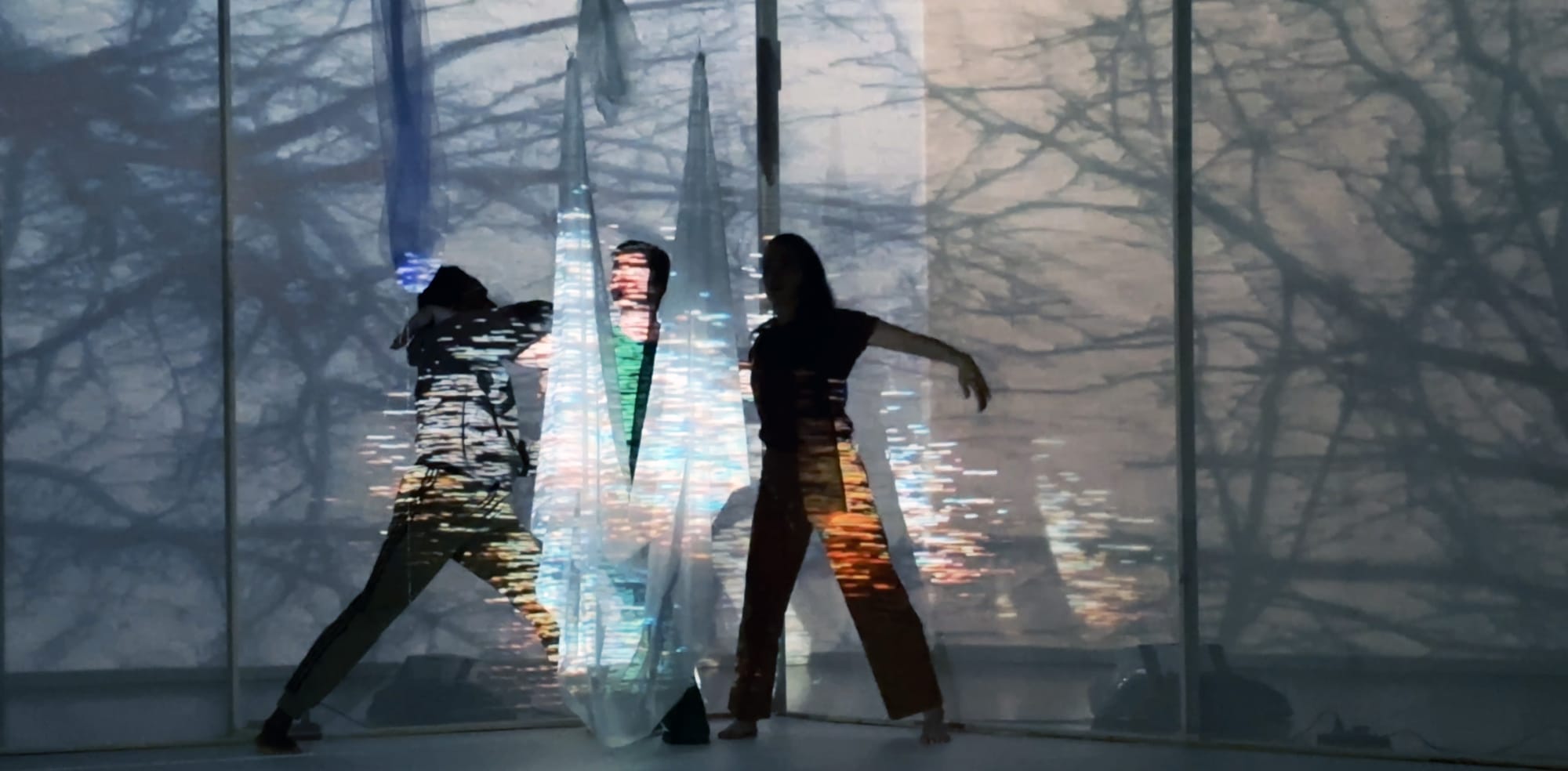
Upcoming Public Events
April 2: AI & Art: Cutting the Strings
Hamilton College, Clinton, New York
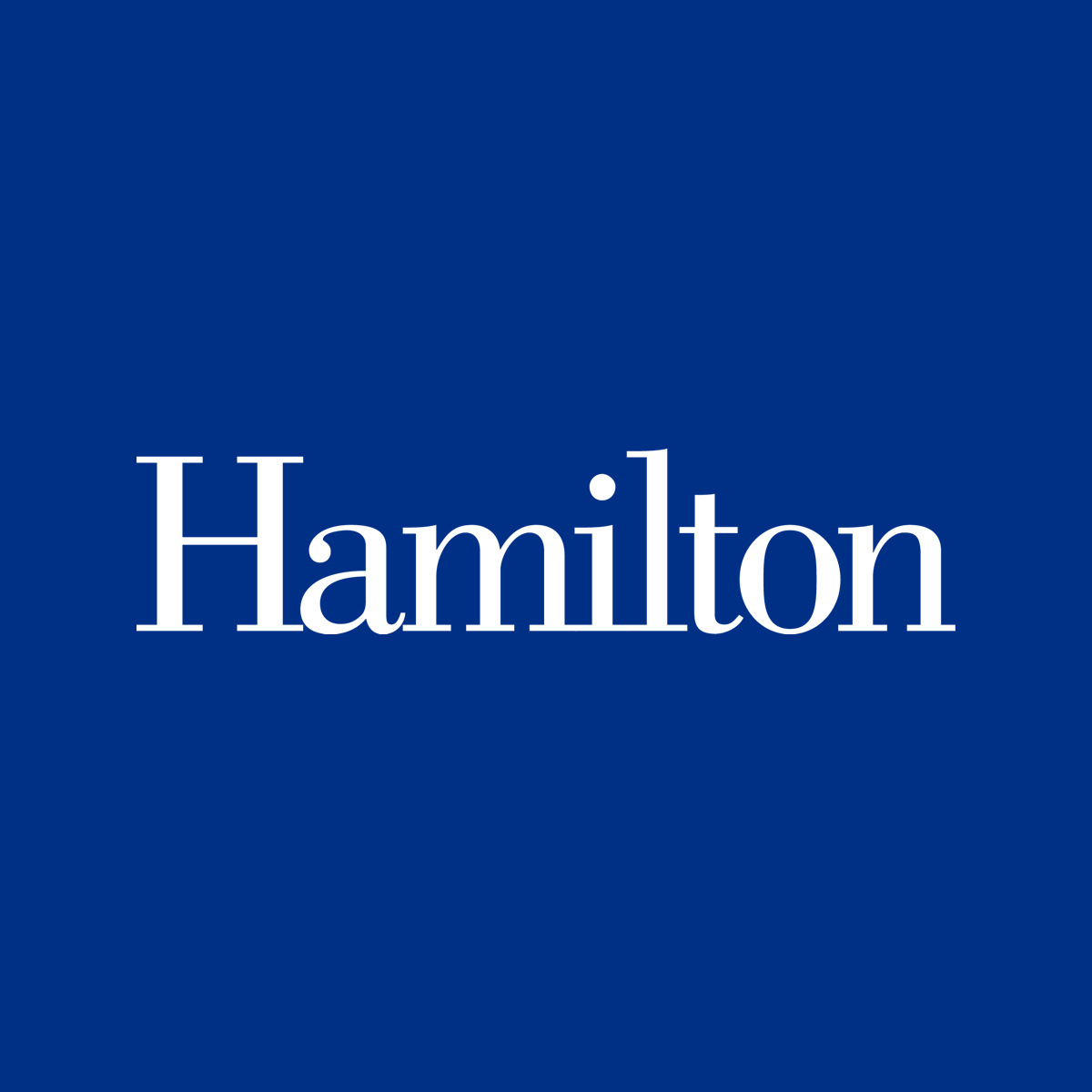
April 5: Residual Noise
Brown University, Providence, Rhode Island
Through spatial audio concerts, installations, and a conference, this three-day festival highlights a wide range of work that takes place in sound: noise, voice, audio narrative, field recording, and related sonic practices. Residual Noise is a collaboration between Brown and the Studio for Research in Sound and Technology (SRST) at RISD with events occurring on both campuses.

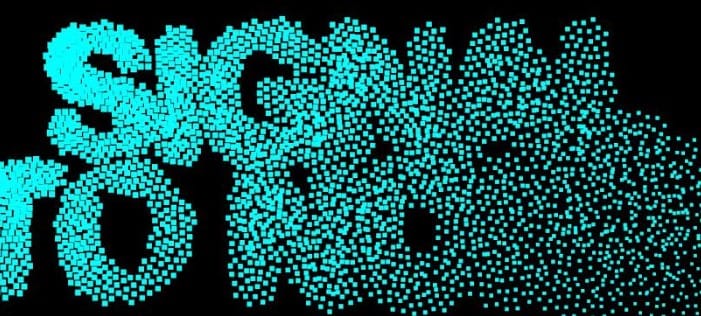
April 12: Opening, Signal to Noise
National Communications Museum, Melbourne, Australia.
In person in Melbourne for the opening of Signal to Noise, curated by Joel Stern, Emily Siddons, and I. Signal to Noise explores how artists work with, challenge, or complicate the relationship between signals and noise—disruptions, glitches or interference—in communication technologies and the messages they send. These technologies include the internet, telephones, radio and television, artificial intelligence, social media algorithms, and even the sounds of the natural world.
Includes works from Nam June Paik, George Brecht, Lillian Schwartz, JODI, elekhlekha อีเหละเขละขละ, Craftwork, Rowan Savage, Mimi Ọnụọha, Machine Listening, and Eryk Salvaggio.
April 16: AI Week, Film Screening w/Q&A
Alfred University, Alfred, New York.
Info coming! In-person.
April 28: AI & Artistic Practice:
Sam Pluta, Brea Souders, and Eryk Salvaggio
University of Maryland Baltimore County, Baltimore, MD.
In a discussion presented by the Center for Innovation, Research, and Creativity in the Arts (CIRCA), composer and sound artist Sam Pluta, visual artist Brea Souders, and video artist and writer Eryk Salvaggio each use and interact with AI in their artistic practice. This will be followed by a discussion moderated by UMBC assistant professor of art Eric Millikin.
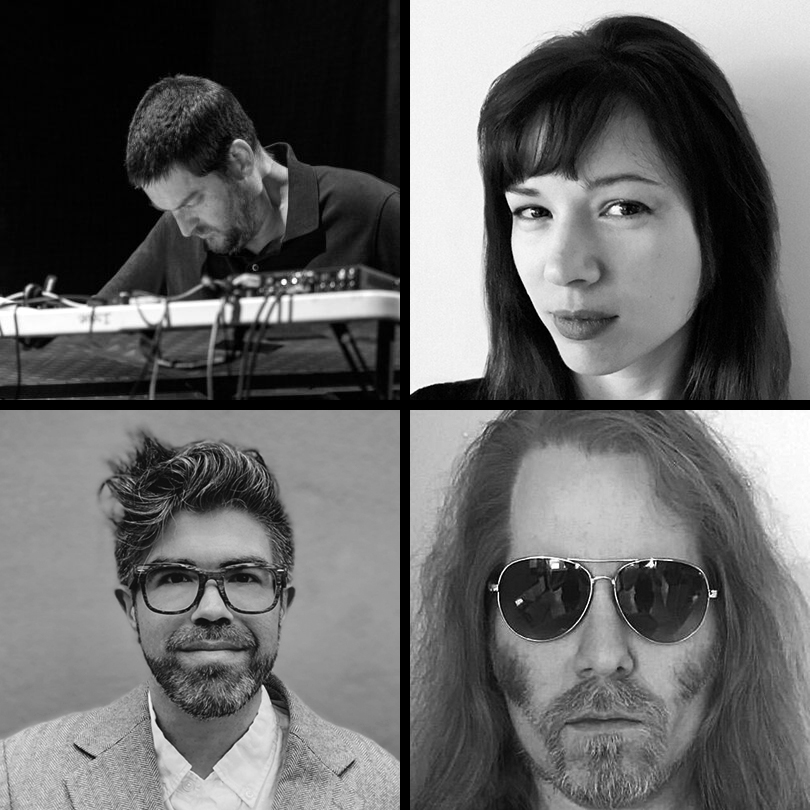
May 3: Human Presentation
AIxDesign Slow AI Festival, Loods6, Amsterdam NL
In-person: Live performance of the film "Human Movie" with Q&A.
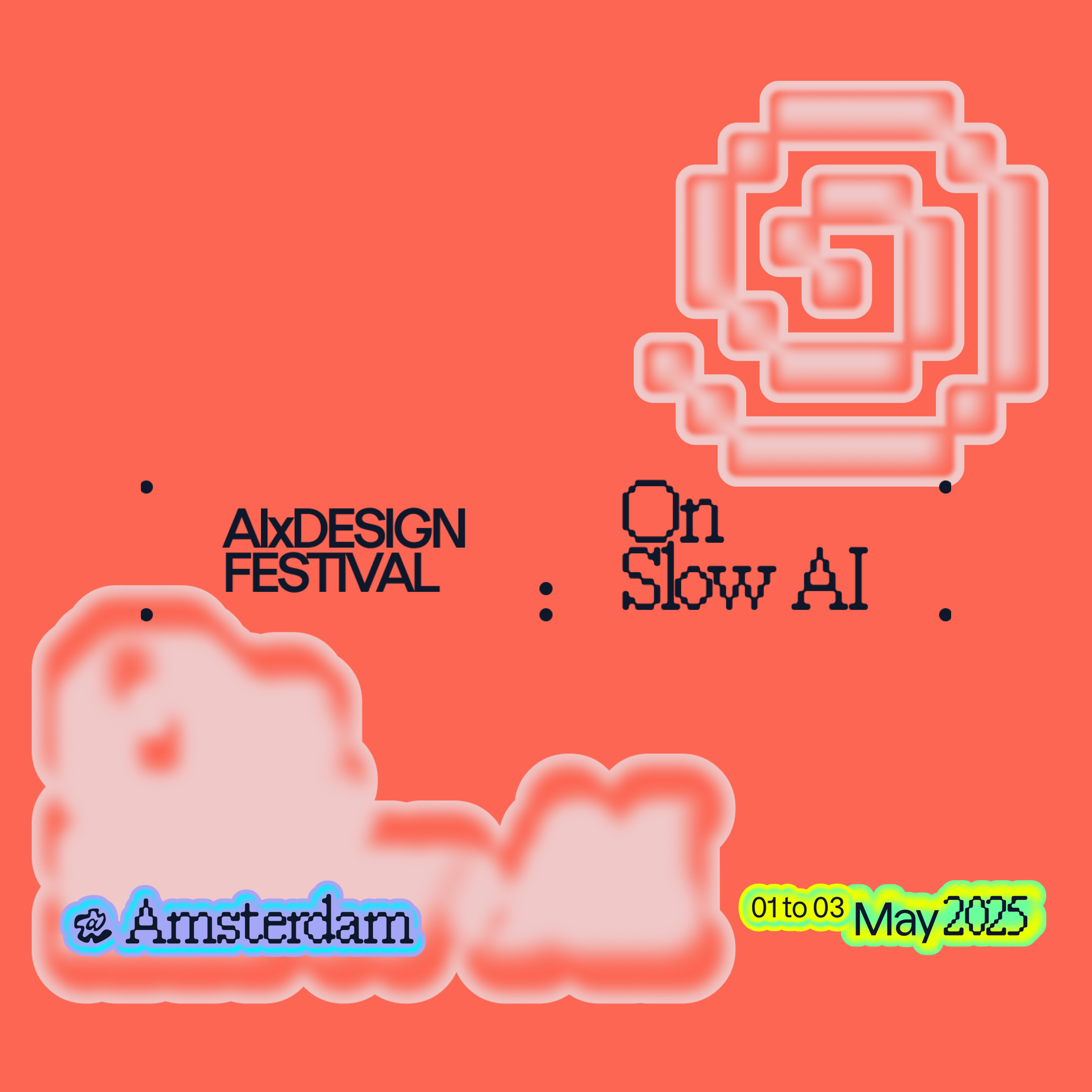
May 6: The Hypothetical Image: Reading the Artifacts of Generative AI
The Photographer's Gallery, London.
In-person artist talk.
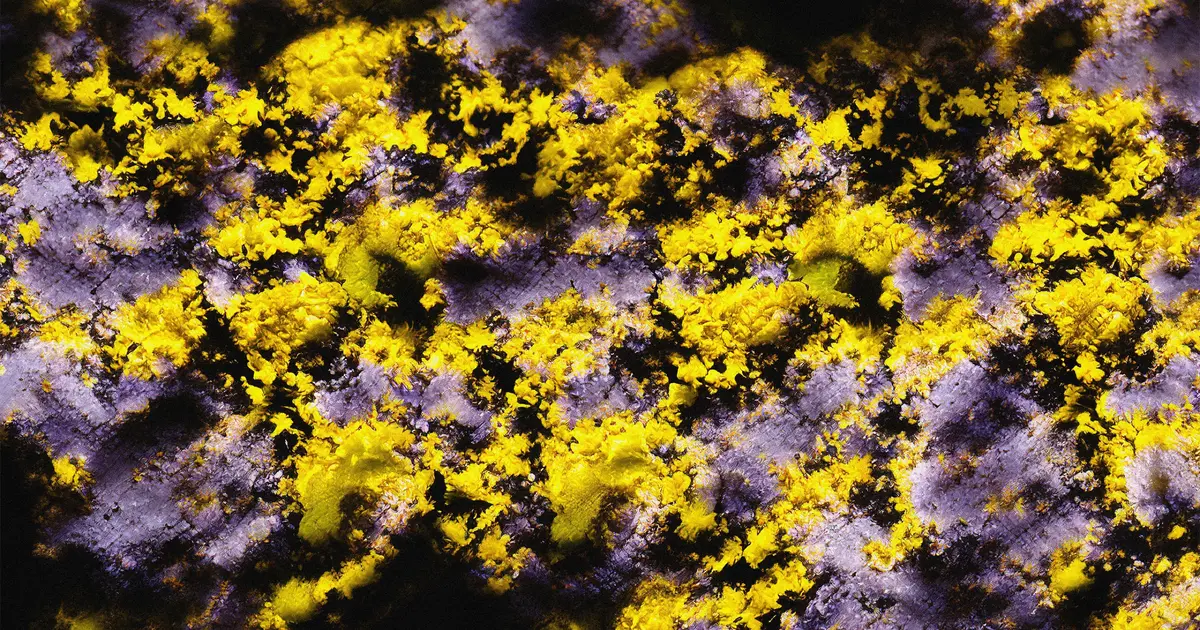
More to come!

